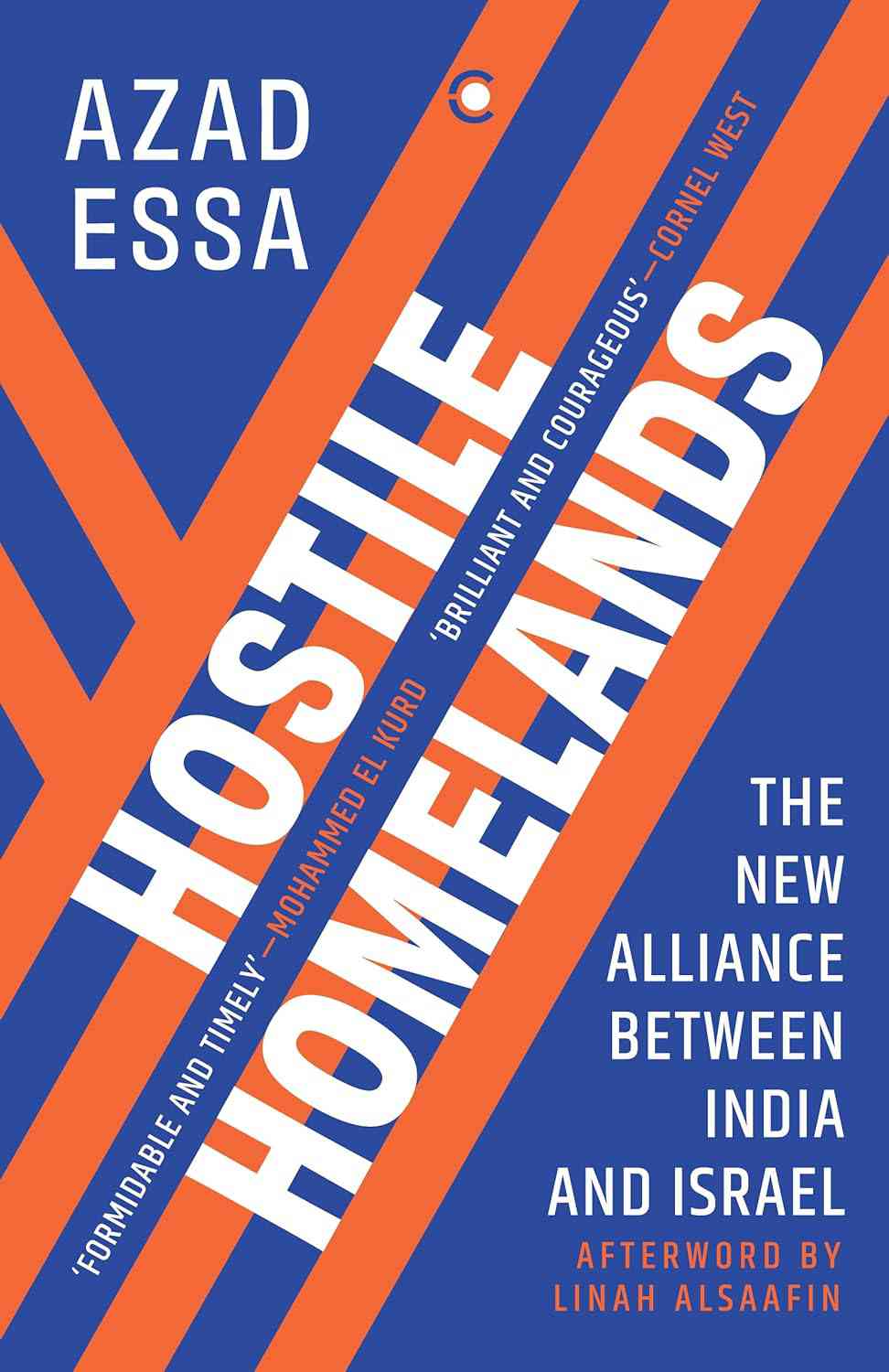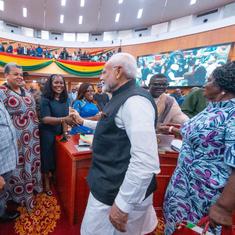The geopolitical reconfigurations following the end of the First World War had a profound impact on independence and nationalist movements across the globe. India was no different. The Indian National Congress, under the leadership of Gandhi, saw the events of the First World War, the issuing of the Balfour Declaration, the collapse of the Ottoman Empire and Caliphate and the establishment of the British Mandate for Palestine in 1922 as further reasons to repudiate British rule. It also helped initiate closer ties with Muslims in India and the assertion of an anti-imperial agenda.
In Palestine, Zionism had arrived. Palestinians were increasingly displaced, excluded from employment opportunities and denied entry into Jewish-only trade unions. As the continuous flow of Jewish refugees from Europe increased, the rate of dispossession of Palestinians only increased. The programme of building a Jewish state brought together Jews (as well as dispensationalist or Christian Zionists) of various persuasions and motivations. The movement spawned political, cultural and labour Zionism (and later revisionist Zionism), each with its own idea as to the character of this future state.
However different these might have been, Zionism in totality agreed that this future state would need to have a Jewish majority and, therefore, establishing it was ultimately predicated on the act of ethnic cleansing of Palestinians. The political project went against Orthodox Jewish beliefs, but it nonetheless proceeded. However, political Zionists were so detached from the sentiments of the Jewish polity that they expressed an openness to a “homeland” in Argentina or Uganda before this matter was put to rest. Once the political project was endorsed, it wasn’t long before the Bible was used as “proof” that Jews belonged in Palestine. And in keeping with the peculiarities of the time, the Zionists reframed their movement as one befitting a “national liberation movement”.
India was the crown jewel of the British Empire, and Zionists paid attention to both the art and literature that emerged from India, as well as the mass mobilisations that threatened the British Empire. However, it was Hindu nationalists who felt an immediate kinship with the Zionist movement. They saw no contradiction in admiring the European fascist movements that targeted European Jews as well as the Zionist project that looked to revitalise the Jewish race by building an exclusive homeland for the Jewish people.
The support of European powers for a Jewish state in the Middle East turned a colonial matter into a civilisational conquest. The subtext now was that “Israel was a device for holding Islam – and later the Soviet Union – at bay,” Edward Said wrote. Herzl, the writer Abdul-Wahab Kayalli argued, had routinely portrayed Zionism “as a political meeting point between Christianity and Judaism in their common stance against Islam and the barbarism of the Orient”. Unsurprisingly, in India, Hindu nationalists saw “the Jewish question” in Europe as “the Muslim problem” in their own backyard. “India’s Muslims are on the whole more inclined to identify themselves and their interests with Muslims outside India than Hindus who live next door, like Jews in Germany,” Savarkar said in a speech in December 1939.
For Hindu nationalists, their support for both fascism in Europe as well as Zionism won them admirers among the right wing in Europe and helped them recast themselves as adjacent to the global racial elite. In Har Bilas Sarda’s book, Hindu Superiority: An Attempt to Determine the Position of the Hindu Race in the Scale of Nations, the famous Indian judge writes that his effort to glorify the Hindu past was not meant to “run down any creed or nationality […] it may be remarked that the evils of the rule of the Afghans, Turks, and others were due not to the religion they professed but by their ignorance and backwardness in civilisation”.
It is precisely this invocation of a racial, civilisational and cultural superiority and the adoption of a very European tradition of pathologising Muslims as a backward and problematic minority that has lured Hindu nationalists and supremacists towards European ethno-fascism. For Hindu nationalists and supremacists, the comparison with Zionism, then, was not incidental. It merely represented an exchange in a large, and longer, conversation between Judaism and Hinduism, as “two age-old civilisations”. Hindutva’s affinity for the Zionist search for a homeland spoke to their interactions across the centuries.
Hindutva’s construction of the Hindu proto-race (as “insider”) in opposition to Muslims (as ultimate “outsider”) through a focus on religion, culture and philosophy was a marker of “civilisation”. In other words, Hindutva held that the people of India were all fundamentally Hindu and that Hinduism was ultimately their race-culture. It also determined who could be part of the nation. As academic Satadru Sen argues, both Zionism and Hindutva developed “an interest in deploying the language and imagery of a racialised people whose health was both a scientific and a political problem”. Golwalkar, in particular, was caustic and influential when he articulated the place of “the other” in his book We or Our Nationhood Defined: “All those not belonging to the national ie, Hindu Race, Religion, Culture and Language, naturally fall out of the pale of real ‘National’ life.”
There were other similarities in the religious ethos of both Judaism and Hinduism, which right-wing proponents latched on to, too. Both Jews and Hindus purportedly rejected conversion and were unenthused by the proselytising habits of others (Christians and Muslims). This underscored the aforementioned anxiety of racial “contamination” or being demographically overrun by Muslims or Arabs or Palestinians. This concern is foundational to racial superiority as purported by both Zionists and Hindu nationalists. The duo also found symmetry in the vigour of the religion itself. While Hinduism was about seeking eternal enlightenment, Judaism could be characterised as a journey “to search after the knowledge of God”. These similarities became the religious backbone for building ties between the political projects of Hindutva and Zionism, which relied on myth-making as a form of statecraft.
But the relationship didn’t happen immediately. With the labour Zionist movement becoming the dominant stream in Palestine, Zionists reached out to the presiding movement in India: the INC and Gandhi. For labour Zionists, Gandhi represented a version of Hinduism that appeared to match their egalitarian vision of Zionism, being still in denial over the actions of the Haganah or militia. The Hindu nationalists, however, chose to understand Zionism in its totality. It is no surprise that Ze’ev Jabotinsky, the father of revisionist Zionism, or the right-wing version of Zionism that rejected labour Zionism’s “negotiation” in the Holy Land, wrote his manifesto, The Iron Wall, in 1923, the same year that Savarkar published his treatise on Hindutva. Unlike labour Zionists, Jabotinsky was blunt about his ambitions. Hindu nationalists, too, saw the full project, understood the implications and imbibed the values.
Jabotinsky argued that only the complete disenfranchising of Palestinians would convince them to accept the Jewish settlers:
Culturally they [the Palestinian Arabs] are 500 years behind us, spiritually they do not have our endurance or our strength of will, but this exhausts all of the internal differences. We can talk as much as we want about our good intentions; but they understand as well as we what is not good for them.
On the “Arab Question”, Jabotinsky argued: “Zionist colonisation must either stop, or else proceed regardless of the native population. Which means that it can proceed and develop only under the protection of a power that is independent of the native population – behind an iron wall, which the native population cannot breach.”
Jabotinsky and Zionist revisionists accused labour Zionists of attempting to obscure what they all fundamentally agreed was a colonial project in Palestine. Likewise, for Hindu nationalists, the INC’s “policy of appeasement” delayed the inevitable: the creation of a majoritarian Hindu state. Philosophically, Hindutva was fundamentally anti-Muslim. The “Hindu” identity was built almost entirely in opposition to Muslims, even placed ahead of the struggle for independence. So much so that some of Hindutva’s early ideologues extricated themselves from the larger Indian struggle for independence.
In theory, Zionism shared the imperial methodology of dispossession and settlement with European colonisers, including the British, as it shared with Afrikaner “puritans” the bigoted policy of separate development exercised under apartheid South Africa. But it also resonated in the anxieties of Muslims in colonial India, who, fearing Hindu majoritarianism and their position of “minority”, began to conceptualise a separate polity of their own.
It is this fear of Hindu majoritarianism that culminated in the formation of the idea of Pakistan, prompting some to suggest that Israel and Pakistan, both formed on the basis of religion, were kindred spirits, too. Other scholars argued that traces of labour Zionism, often depicted as the dominant strain of the ideology, could be found in the socialist, internationalist agenda of the Nehru government as well.
These were all political movements in the making, laden with contradiction and opportunism. However, the comparisons between Zionism or Israel with both Nehru-led India and the project of Pakistan are simplistic and incomplete. For starters, the Indian struggle for freedom against the British, as flawed and contradictory as it might have been, cannot be compared with the Zionist so-called struggle for independence from the British. Through the auspices of the Balfour Declaration, it was the British who had demarcated Palestine for the Zionist settler-colonial project in Palestine in the first place.
As early as 1931, it was clear that all Zionists “concurred ideologically with the principle of Jewish sovereignty over all Palestine”, Zeev Tzahor writes. If anything, labour Zionism functioned as a Trojan horse for settler colonialism. They held disagreements on strategy, on timing, on language, but “there was no difference between our militarists and our vegetarians”, as Jabotinsky put it.
The comparisons with Pakistan, too, are inadequate; beyond the similar predicament that both Jews in Europe and Muslims on the Indian subcontinent faced in becoming a minority in the modern nation-state, there aren’t many similarities. Pakistan was not designed to be a settler-colonial imperial outpost as the Zionist state was envisioned.
The territorial lands that would ultimately make up Pakistan – as fluid as they may have been – still had geographic contiguity with the regions in which Muslims were a majority. This was the territorial demand of the founders of the Pakistan movement. They did not have extra-territorial ambitions, nor did they seek to make all of the Indian subcontinent into Pakistan. They were, primarily, concerned with questions of power sharing among Hindus and Muslims after the departure of the British. In addition, Muslims were not settlers in Pakistan, nor did the Pakistan movement seek to replace existing Hindu and Sikh minority communities with Muslims, although the violence at the time of Partition caused a refugee crisis across both India and Pakistan. While Pakistan was initially conceived of as a Muslim homeland, within a few months it was evident that Pakistan – unlike the Zionist state – was not invested in settling Muslims from around the world (or even North India) in the nascent nation.
The settler constitution of Zionism is integral to its ideology; this was not the case with Muslim nationalism on the Indian subcontinent. Furthermore, the Zionist project was much more invested in a mythical history, a trait it shares with Hindutva rather than the founders of the Pakistan movement. In other words, symmetries will exist; some imagined, others more fanciful. However, when it comes to Hindu nationalism and the complete project of Zionism – be it cultural, political, labour or revisionist – the two ideas share more than symmetry. They share kinship. And their differences aside, the pursuit of consolidating dominion to create unified states with a single culture and identity predicated on erasing the “other” is what ultimately defines their kinship.

Excerpted with permission from Hostile Homelands: The New Alliance Between India and Israel, Azad Essa, Context/Westland.










